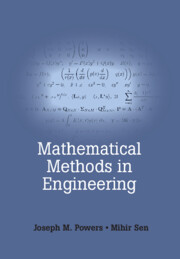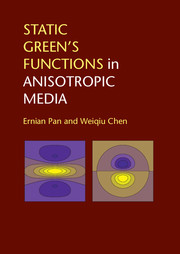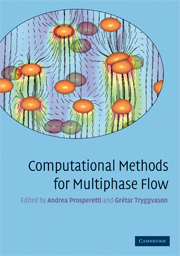Advanced Mathematics for Applications
The partial differential equations that govern scalar and vector fields are the very language used to model a variety of phenomena in solid mechanics, fluid flow, acoustics, heat transfer, electromagnetism and many others. A knowledge of the main equations and of the methods for analyzing them is therefore essential to every working physical scientist and engineer. Andrea Prosperetti draws on many years' research experience to produce a guide to a wide variety of methods, ranging from classical Fourier-type series through to the theory of distributions and basic functional analysis. Theorems are stated precisely and their meaning explained, though proofs are mostly only sketched, with comments and examples being given more prominence. The book structure does not require sequential reading: each chapter is self-contained and users can fashion their own path through the material. Topics are first introduced in the context of applications, and later complemented by a more thorough presentation.
- Its modular structure makes the book suitable for a variety of uses and users
- Homework sets are available from www.cambridge.org/prosperetti
- Appendix provides material that is usually covered in mathematical analysis courses (e.g. the Lebesgue integral) but is often unfamiliar to the applied mathematician
Reviews & endorsements
"This carefully written book by a well-known expert in the area is also an excellent guide to the present literature, recommended as well to graduate students as to experts in the area. This volume will help the reader in getting acquainted with some mathematical aspects of the modern theory of linear and non-linear phenomena arising in relevant applications to mathematical physics."
Zentralblatt MATH
"This is a really wonderful book. It offers an amazing variety of information, well
condensed but nevertheless very clear and easily understandable. It can be used just for learning mathematics, its notions and insights, yet the advanced reader discovers new, unexpected material over and over again, becoming up to date in a broader field, learning special methods, or using the book as an excellent manual when solving problems and exercises. The author has succeeded in creating a new, highly innovative kind of textbook. This most valuable modern book hardly needs recommendation, since it captures the reader as soon as she or he starts reading. We shall soon find it in reference lists. The author deserves the highest praise for this wonderful intellectual gift to the community. It certainly involved a huge amount of work combined with an expert’s broad knowledge."
Siegfried Grossmann, Journal of Fluid Mechanics
"This book admirably lays down physical and mathematical groundwork, provides motivating examples, gives access to the relevant deep mathematics, and unifies components of many mathematical areas. This sophisticated topics text, which interweaves and connects subjects in a meaningful way, gives readers the satisfaction and the pleasure of putting two and two together."
Laura K. Gross, Bridgewater State University for SIAM Review
Product details
February 2011Paperback
9780521735872
742 pages
247 × 173 × 36 mm
1.32kg
80 b/w illus.
Available
Table of Contents
- Preface
- To the reader
- List of tables
- Part I. General Remarks and Basic Concepts:
- 1. The classical field equations
- 2. Some simple preliminaries
- Part II. Applications:
- 3. Fourier series: applications
- 4. Fourier transform: applications
- 5. Laplace transform: applications
- 6. Cylindrical systems
- 7. Spherical systems
- Part III. Essential Tools:
- 8. Sequences and series
- 9. Fourier series: theory
- 10. The Fourier and Hankel transforms
- 11. The Laplace transform
- 12. The Bessel equation
- 13. The Legendre equation
- 14. Spherical harmonics
- 15. Green's functions: ordinary differential equations
- 16. Green's functions: partial differential equations
- 17. Analytic functions
- 18. Matrices and finite-dimensional linear spaces
- Part IV. Some Advanced Tools:
- 19. Infinite-dimensional spaces
- 20. Theory of distributions
- 21. Linear operators in infinite-dimensional spaces
- Appendix
- References
- Index.







